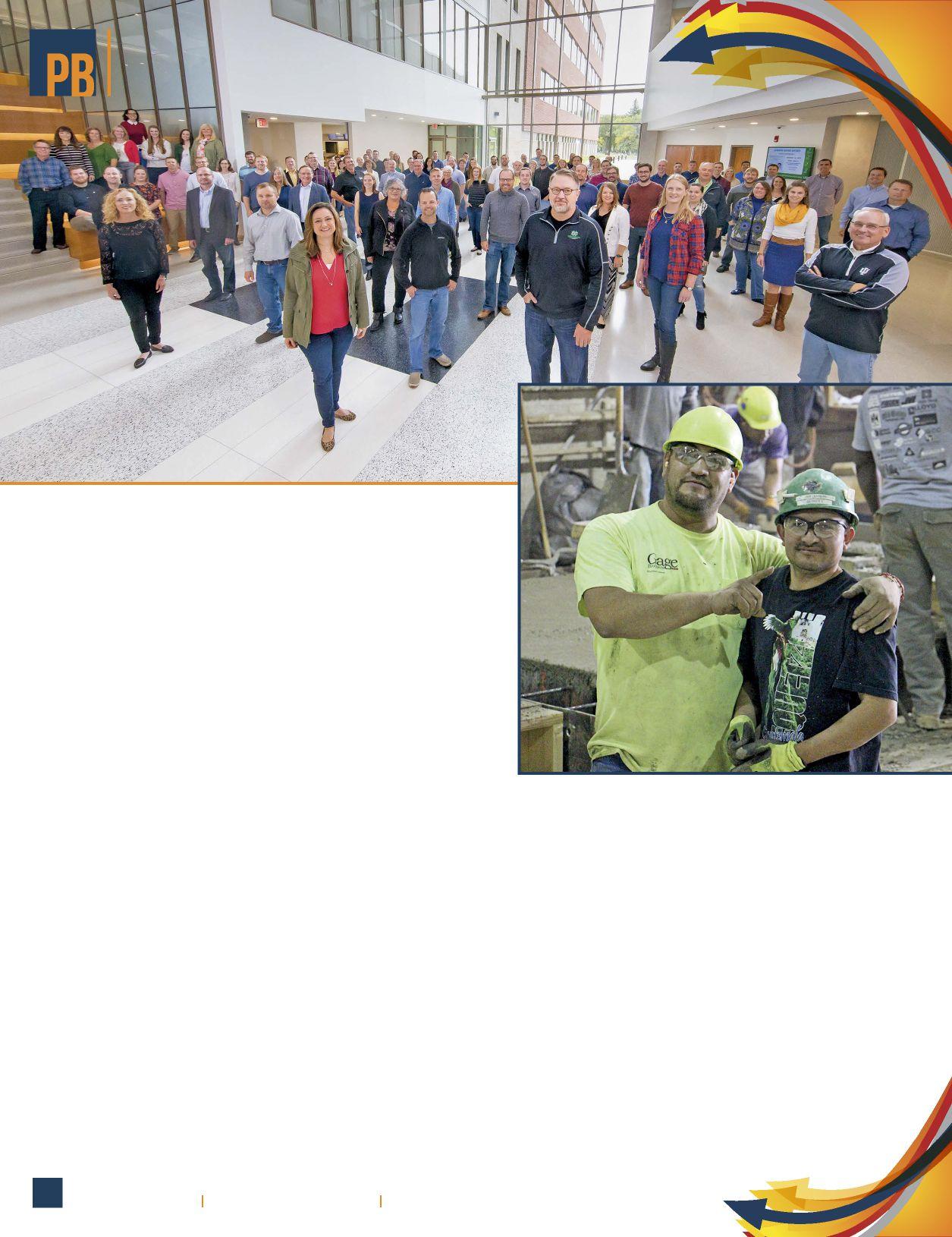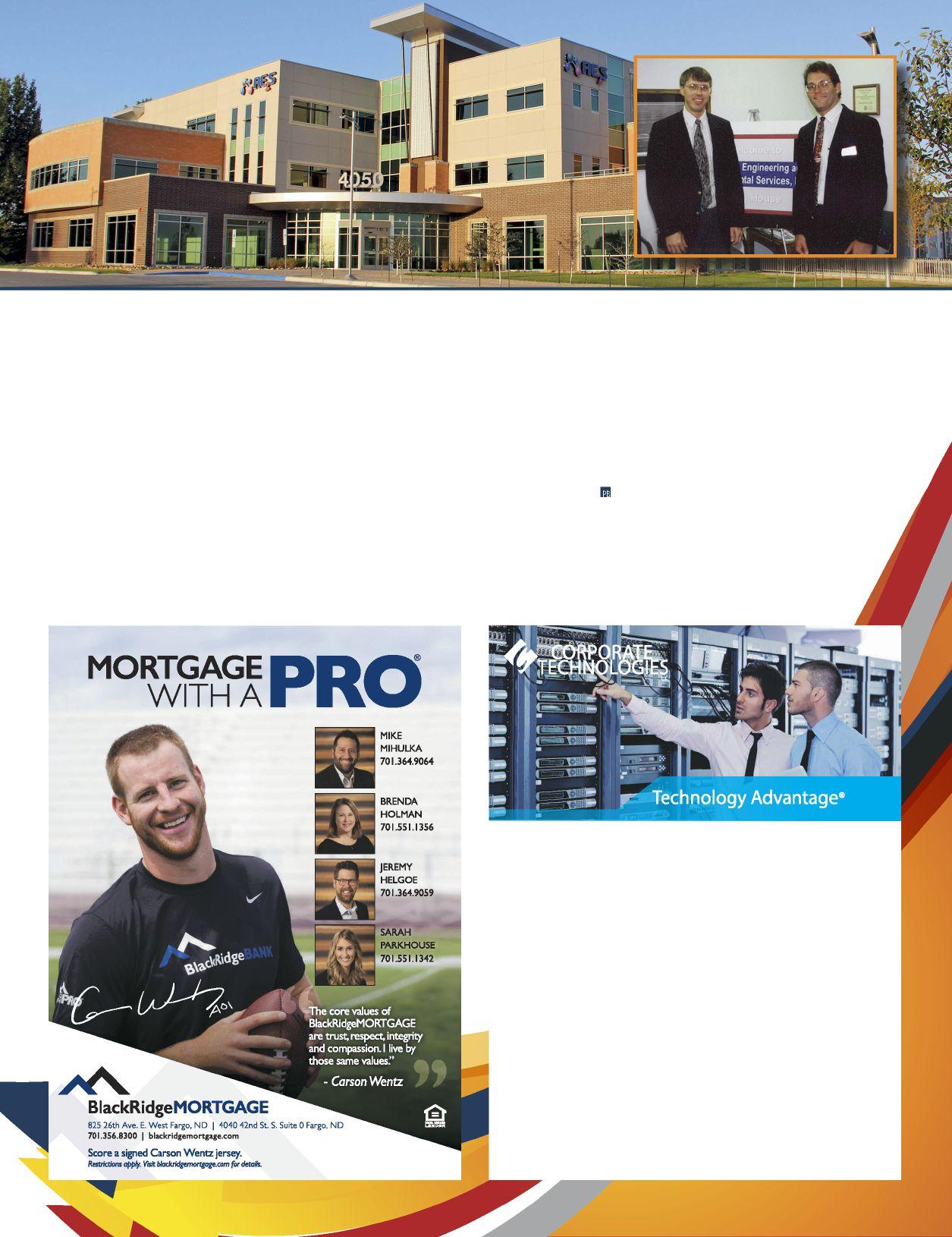
3 minute read
IF YOU’RE THINKING OF DOING AN ESOP…
The CFO of a North Dakota-based architectural firm that launched its employee stock ownership plan in 2014 offered several tips for business owners considering an ESOP. Jason Haagenson of JLG Architects said it’s wise to first consider whether your business is large enough and profitable enough to sustain an ESOP, as there will be start-up costs and ongoing costs to the company.
If it seems like a good fit:
• Talk to businesses in your area that have ESOPs for some practical advice.
HAL GERSHMAN, PRESIDENT OF HAPPY HARRY'S BOTTLE SHOPS, STANDS AMONG THE WINE AISLES AT HIS 32ND AVENUE SOUTH STORE IN GRAND FORKS, N.D. IN 2015, GERSHMAN STARTED TRANSITIONING HIS COMPANY'S OWNERSHIP TO AN EMPLOYEE STOCK OWNERSHIP PLAN.
IMAGE: NICK NELSON/FORUM NEWS SERVICE
• Visit with national groups such as the ESOP Association (online at www.esopassociation.org) and the National Center for Employee Ownership (www.nceo.org) for more technical advice. Closer to home, the Minnesota/Dakotas Chapter of the ESOP Association (http://www.mndak-esop.org) is also a good source of information.
• When you’re sure you want to move ahead with it, bring in specialists as needed, such as financial planners and lawyers who work with Employee Retirement Income Security Act law. They can help you set up a plan that works for you.
• Keep in mind that because an ESOP is in essence a retirement plan, the federal Department of Labor and the Internal Revenue Service will have to sign off on yours before it goes into effect.
The savings can be significant, considering that the owner often has spent an entire lifetime growing the business.
And for S-corporations, “a company 100 percent owned by its ESOP does not pay any federal and most state income taxes,” Forbes explained.
“Yes, you read that correctly: the profits earned by the company stay with its employees,” often resulting in increased contributions to the employees’ ESOP accounts.
As Paul Halverson, a Minneapolis-based financial advisor, told Forbes, “this is the redistribution of wealth done the right way.”
SIDE BENEFIT: QUALITY
Companies that have ESOPs tend to agree that the plans ratchet up the quality of the company’s products and services. For example, Haagenson, of JLG Architects, suggests that having an ESOP not only makes it easier to recruit and retain top talent, it probably brings out employees’ best work.
“Employee engagement has improved since the transaction four years ago. They feel empowered due to our culture, the employeeownership culture that we have,” Haagenson said.
“People understand that what they do on a daily basis affects the bottom line for JLG.”
At Alerus, Randy Newman, president, CEO and chairman of the board, said one company goal is to create long-term value for all shareholders, including employees.
“We have a long-held belief within Alerus that the ESOP positions all of us to have a vested interest in the success of our company,” Newman said. “As owners, we think differently by making decisions in the benefit of our clients, and our company. As owners, we also share in the company’s financial success.”
President J. Michael Keeling of the Washington-based ESOP Association believes he knows why quality trends upward in ESOP companies.
“The individual benefits in the long run if the company does well. It’s money in their ESOP. It’s their personal gain,” Keeling said. “They’re part of a system called capitalism.”
The View Nationally
According to the National Center for Employee Ownership, the greatest number of ESOPs – about 32 percent of the nation’s total – are in the Midwest. But the smallest numbers of ESOPs in the region are found in the Plains states that make up the west wall of the Midwest. Kansas and Nebraska have 108 and 69 ESOPs, respectively, while North Dakota and South Dakota have 59 and 25.
SHORTLY AFTER COFOUNDING AE2S IN 1991, CHARLIE VEIN
18 OFFICES, INCLUDING THIS HEADQUARTERS IN GRAND FORKS, N.D. IMAGES: AE2S

One possible reason the Plains states have so few may be because ESOPs, according to the data, are not common in industries such as agriculture and mining. They’re more common in service industries; manufacturing; finance/insurance/real estate; and construction, in that order.
Keeling said the greatest number of ESOPs are found in a swath of the Midwest that starts in south-central Michigan, runs straight across to southwestern Michigan, then across Lake Michigan to southern Wisconsin and finally to the Twin Cities area. Grand Rapids, Mich., for example, has more ESOPs than many large metro areas.
Keeling has theories about why that may be.
“I truly believe that a lot of it is the heritage of that part of America, of the Scandinavian-Protestant ethic,” Keeling said.
“When I visit companies that have done ESOPs – this is true of companies I have visited in southern Michigan, southern Wisconsin and the Twin Cities area – when the owner-founder who is still there or someone who is the first-generation CEO type, etc., talks about the company, they use plural personal pronouns: ‘We did this.’”
That’s in contrast to the first-person singular pronoun Keeling has heard from owner-founders in some parts of the country – “I did this” – in discussing their businesses.
It’s that regional attitude of being in business together with a group of dedicated employees that naturally lends itself to forming an ESOP, Keeling suggested.
Lance Nixon Freelance writer Pierre, S.D. nixon_lance@yahoo.com










